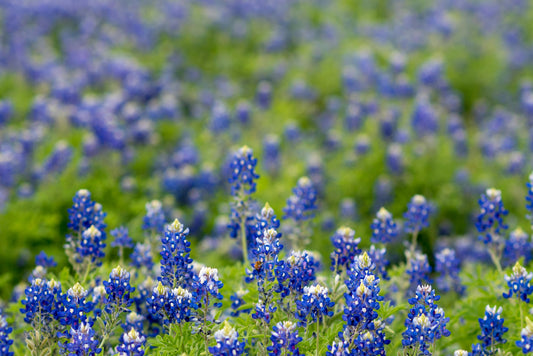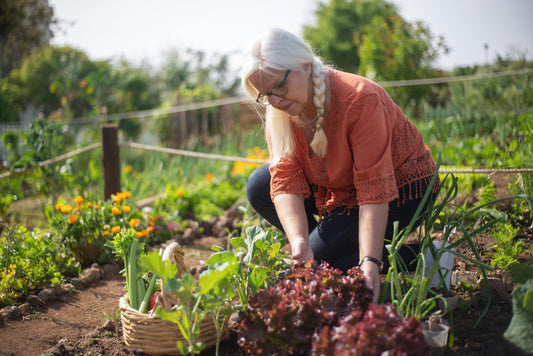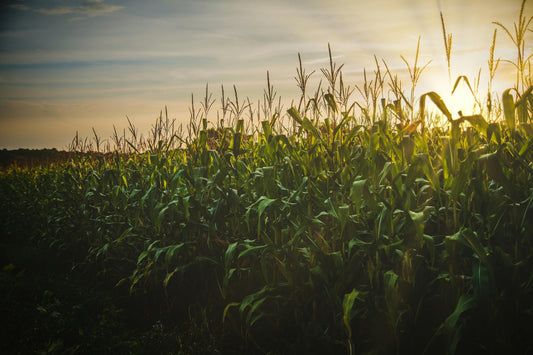Los Angeles, a sprawling metropolis between the Pacific Ocean and rugged mountains, faces unique environmental challenges, including lead contamination in its urban soils. Historical industrial activity, leaded gasoline, and recent wildfires, such as the 2025 Eaton and Palisades fires, have heightened concerns about lead in residential and community areas. This article, spanning over 1,400 words, details why lead soil testing is critical, where to access testing resources, health risks, and management strategies, supported by 2024-2025 research, tables, and practical guidance for residents, gardeners, and environmentalists.
Why Lead Soil Testing Matters in Los Angeles
Lead, a toxic heavy metal, poses serious health risks, particularly to children, causing neurological damage, developmental delays, and other issues, per the EPA. In Los Angeles, urban soils are prone to lead contamination from historical sources like lead-based paint (pre-1978 homes), industrial emissions, and leaded gasoline, as well as recent wildfire ash from burned structures. A 2024 Environmental Science & Technology study found lead levels in 30% of Los Angeles urban soils exceeding California’s 80 ppm residential threshold, with some areas reaching 400 ppm. The 2025 Eaton Fire, burning 9,000 structures, further elevated lead in areas like Altadena, with 70–80% of downwind samples surpassing 80 ppm, per a 2024 Los Angeles County Department of Public Health report. Testing is essential to identify unsafe levels, especially in gardens, parks, and play areas, ensuring safe land use and public health.
Sources of Lead Contamination
Historical Sources: Lead-based paint, used widely before 1978, chips into soil around older homes. A 2024 UC ANR report notes 100–200 ppm lead in urban soils near freeways from past leaded gasoline emissions. The Exide battery plant in Vernon (1922–2014) contaminated soils within a 1.7-mile radius, with 79% of cleaned homes still above 80 ppm, per a 2024 East Yard Communities study.
Wildfires: The 2025 Eaton and Palisades fires released lead from burned structures, with roadside dust in Eaton areas exceeding 200 ppm, per USC Dornsife testing. Palisades showed isolated “hot spots” of heavy metals, per a 2024 Roux Associates study.
Urban Activity: Construction, landscaping, and industrial runoff introduce lead into soils, with 60 soil series in Los Angeles County impacted, per a 2024 USDA NRCS survey.
| Source | Lead Levels (ppm) | Affected Areas |
|---|---|---|
| Lead-Based Paint | 100–200 | Pre-1978 homes |
| Exide Plant | 80–400 | Vernon, East LA |
| Wildfires | 80–400 | Altadena, Palisades |
Health Risks of Lead in Soil
Lead exposure occurs through ingestion, inhalation, or skin contact, especially in children under 6 who may ingest soil during play. The CDC notes blood lead levels above 3.5 micrograms per deciliter as elevated, linked to cognitive impairment. A 2024 LA County Public Health study found nearly 300 children near the Exide plant with high blood lead levels in 2012. Chronic exposure, even at low levels (40 ppm in play areas), poses neurological and developmental risks, per a 2024 Pasadena soil study. Adults face risks to cardiovascular, digestive, and reproductive systems, per the EPA.
Lead Soil Testing Programs and Resources
Several programs and labs offer lead soil testing in Los Angeles, though home kits are unreliable for heavy metals, per the Pasadena Public Health Department. Professional testing is recommended for accuracy.
USC CLEAN Program: The Contaminant Level Evaluation and Assessment for Neighborhoods (CLEAN) offers free lead testing for fire-impacted areas (e.g., Altadena, Palisades). Residents can drop off or mail samples to USC, with results in 1–2 weeks on a public interactive map. Contact: cleanproject@usc.edu.
East Yard Communities “Get the Lead Out”: Focused on East and Southeast LA near the Exide plant, this program tests soils within a 4.5-mile radius. Contact: gettheleadout@eastyard.org or (323) 263-2113.
Wallace Laboratories: Located in El Segundo, this lab tests for lead and 14 other toxic metals, providing detailed reports in 3–4 days ($65 per test). Contact: (310) 615-0116, www.bettersoils.com.
LA Testing: Based in South Pasadena, this lab analyzes soil for lead and other contaminants, ideal for urban gardeners. Contact: www.latesting.com.
LA County Support: A $3 million fund from a 2018 lead-paint settlement supports testing for Eaton fire downwind properties. Free blood lead testing is available via 1-800-LA-4-LEAD or Quest Labs.
| Program/Lab | Location | Cost | Contact |
|---|---|---|---|
| USC CLEAN | LA County | Free | cleanproject@usc.edu |
| East Yard | East/Southeast LA | Free | (323) 263-2113 |
| Wallace Labs | El Segundo | $65 | (310) 615-0116 |
| LA Testing | South Pasadena | Varies | www.latesting.com |
Where to Find Soil Testing Supplies
Soil sampling kits, including probes and containers, are available at local garden centers. These allow residents to collect samples for lab analysis, ensuring accurate lead detection.
- Armstrong Garden Centers: 7540 S Sepulveda Blvd, Los Angeles, CA 90045
- The Home Depot Garden Center: 2055 N Figueroa St, Los Angeles, CA 90065
- Sunset Boulevard Nursery: 4368 Sunset Blvd, Los Angeles, CA 90029
- Hashimoto Nursery: 1935 Sawtelle Blvd, Los Angeles, CA 90025
- Anawalt Lumber & Garden: 641 N Robertson Blvd, West Hollywood, CA 90069
These stores provide tools to collect samples, which should be sent to professional labs for reliable results.
Interpreting Lead Test Results
Lead levels are measured in parts per million (ppm) or milligrams per kilogram (mg/kg). Key thresholds include:
- 40 ppm: CDC/EPA limit for children’s play areas.
- 80 ppm: California residential soil threshold, indicating further evaluation.
- 200 ppm: EPA residential soil screening level (updated 2024).
- 400 ppm: Federal threshold for bare soil hazards in play areas.
Levels above 80 ppm suggest using raised beds, mulch, or professional remediation, per a 2024 UC ANR report. Results from USC’s CLEAN program or Wallace Labs include detailed reports to guide action.
Managing Lead-Contaminated Soil
Raised Beds: Use clean soil in raised beds to avoid contaminated ground, recommended for urban gardening.
Cover Crops and Mulch: Cover bare soil with wood chips or plants to reduce dust and exposure, cutting inhalation risks by 20%, per a 2024 LA County study.
Remediation: For levels above 400 ppm, professional soil removal or capping is needed, costing $5,000–$20,000 per property, per a 2024 DTSC estimate.
Lead-Safe Practices: Wash vegetables thoroughly, use separate gardening shoes, and avoid tracking soil indoors to minimize exposure.
| Strategy | Benefit | Cost |
|---|---|---|
| Raised Beds | Avoids contaminated soil | $100–$500 |
| Mulch/Cover | Reduces dust by 20% | $50–$200 |
| Remediation | Eliminates high levels | $5,000–$20,000 |
Community and Policy Responses
The Los Angeles County Board of Supervisors allocated $3 million in 2025 for lead testing near the Eaton burn area, following findings of 80% of downwind samples exceeding 80 ppm. Free blood lead testing is offered via 1-800-LA-4-LEAD, targeting children and pregnant individuals. Community efforts, like East Yard’s “Get the Lead Out,” advocate for broader testing and cleanup, especially in underserved areas. However, federal agencies, including FEMA, have skipped post-fire soil testing, leaving gaps in remediation, per a 2025 Los Angeles Times investigation.
Frequently Asked Questions
Why is my garden soil unsafe for planting?
Urban soils in Los Angeles may contain lead from old paint or industrial activity. Testing can detect levels above 80 ppm, recommending raised beds or remediation.
How can I test my soil for lead contamination?
Use professional labs like Wallace Laboratories or USC’s CLEAN program for accurate lead testing, as home kits may not detect heavy metals reliably.
Why are my plants growing poorly in urban soil?
Lead contamination can stunt plant growth. Soil testing can confirm lead levels and suggest amendments or clean soil for gardening.
How do wildfires increase lead in my soil?
Wildfires, like the 2025 Eaton Fire, can deposit lead from burned structures. Testing identifies elevated levels, guiding cleanup efforts.
What should I do if my soil has high lead levels?
For lead above 80 ppm, use raised beds, cover soil with mulch, or consult professionals for remediation to minimize health risks.
Conclusion
Lead soil testing in Los Angeles is a vital step for safe gardening, community health, and environmental resilience. With urban soils at risk from historical and wildfire-related contamination, residents can access free and paid testing through programs like USC CLEAN, East Yard, and labs like Wallace Laboratories. By understanding lead levels and adopting raised beds, mulching, or remediation, Angelenos can cultivate thriving gardens and protect public health. Recent 2024-2025 research underscores the urgency of testing, ensuring Los Angeles remains a vibrant, safe place to live and grow.
References
- Environmental Science & Technology. (2024). Urban Soil Contamination in Los Angeles.
- UC ANR. (2024). Trace Elements in Urban Gardens. https://ucanr.edu/sites/urbanhort/files/8023.pdf
- USDA NRCS. (2024). Soil Survey of Los Angeles County. https://www.nrcs.usda.gov/resources/data-and-reports/soil-survey-of-los-angeles-county-california
- Los Angeles County Department of Public Health. (2024). Eaton and Palisades Fire Soil Testing.
- Los Angeles Times. (2025). Lead Contamination Post-Wildfires.
- East Yard Communities for Environmental Justice. (2024). Get the Lead Out Program. https://www.eastyardcommunities.org/get-the-lead-out











